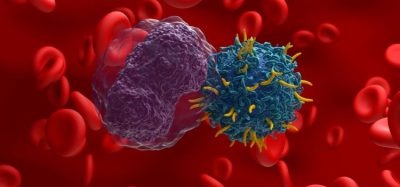Enhancing bioavailability formulations containing soluble acidic drugs
Posted: 2 March 2023 | Catherine Eckford (European Pharmaceutical Review) | No comments yet
Research has revealed efficiency of a multi-compartmental dissolution method used to predict in vivo performance of BCS Class IIa compounds.


A Gastrointestinal Simulator (GIS) was found to be superior to the traditional United States Pharmacopoeia (USP) method in predicting in vivo performance of Biopharmaceutics Classification System (BCS) Class IIa compounds. As the bioavailability enhancement of poorly soluble drugs requires a thorough understanding of the desired formulation, the appropriate in vitro modelling of the absorption mechanism is essential.
Authors of the study stated that as the number of drug candidates is shifting towards high lipophilicity and poor water solubility, the importance of formulation strategies to enhance bioavailability is increasing.
The researchers highlighted that to their knowledge, poorly soluble acidic drugs (BCS Class IIa) have not yet been studied in the GIS, a multi-compartmental dissolution model, despite promising results achieved with the system. Therefore, the study aimed to investigate applicability of multi-compartmental dissolution methods to predict the in vivo performance of BCS Class IIa compounds.
In BCS Class II (low solubility and high permeability) drugs, improved absorption can be achieved by increasing the dissolution rate of the formulation, the authors noted.
For this purpose, salt formation with the drug substance is perhaps the most common approach; however, pre-dissolving the drug in a lipid-based formulation, applying amorphous structures, or reducing particle size are also well-known techniques.
Katona et al. stated that during drug development, compliance with dissolution requirements ensures that the finished drug product is consistent with the release rates of the active pharmaceutical ingredient (API) as determined in bioavailability studies during the clinical trials.
Method of the study assessing bioavailability enhancement
Ibuprofen is one of the most common analgesic/antipyretic agents. The rapid onset of the analgesic effect as well as the higher absorption rate of rapid-dissolving formulations is described in several in vivo studies in the paper.
Immediate-release drug products are generally tested in apparatus I and apparatus II, specified by the United States Pharmacopoeia (USP), the researchers explained. However, such methods are usually not sufficient to represent the complex physiology of the gastrointestinal system.
The researchers tested different conventional and rapid-dissolving ibuprofen 200mg formulations using the GIS system with biorelevant dissolution media. The formulations were also dissolved with the quality control method of ibuprofen tablets according to USP, and the predictivity of each method was evaluated.
A Level A in vitro–in vivo correlation (IVIVC) model was established using published in vivo data, and then the plasma concentration profiles of each formulation were simulated.
Results
In addition to the free acid form, ibuprofen was present as sodium and lysine salts in tablets and as a solution in soft-gelatine capsules. In the case of rapid-dissolving formulations, the dissolution results indicated supersaturation in the gastric compartment, which affected the resulting concentrations in the duodenum and the jejunum as well.
When testing dissolution formulations using the USP method, IBU and IBU-Na dissolved rapidly, as more than 85 percent of the drug substance dissolved in 15 min. Overall, the USP method was unable to discriminate between rapid-release and standard ibuprofen formulations.
The key factors that enabled the superiority of the GIS were identified as:
- Its multi-compartmental design
- Biorelevant fluid volumes
- pH change.
These enabled the modelling of the complex mechanism behind the advanced absorption of rapid-dissolving ibuprofen formulations. Therefore, these were essential to achieve the desired predictivity. In contrast, the USP dissolution method using a high volume of pH 7.2 phosphate buffer to ensure sink condition was unable to differentiate between conventional and enhanced bioavailability formulations.
In the paper, the better in vivo predictivity of the method was also demonstrated for immediate release formulations containing BCS Class IIa compounds, to which less attention was paid before, the authors acknowledged.
Pre-dissolving or salt formation of poorly soluble acidic compounds leads to temporary supersaturation in an acidic medium, which, thanks to the continuous gastric emptying, affects the resulting concentration in the upper small intestine as well.
Both dissolution and solubility results indicated that the role of gastrointestinal pH conditions in the in vivo dissolution of poorly soluble, acidic drug substances is more significant compared to the solubilising effect of biomolecules.
Overall, the multi-compartmental GIS model using blank biorelevant media was found efficient in predicting the in vivo performance of ibuprofen formulations. Katona et al. concluded: “Predicting the in vivo behaviour and providing a better understanding of the absorption process can both contribute to the successful development of enhanced bioavailability formulations containing BCS Class IIa drugs.”
The study was published in the journal Pharmaceutics.









